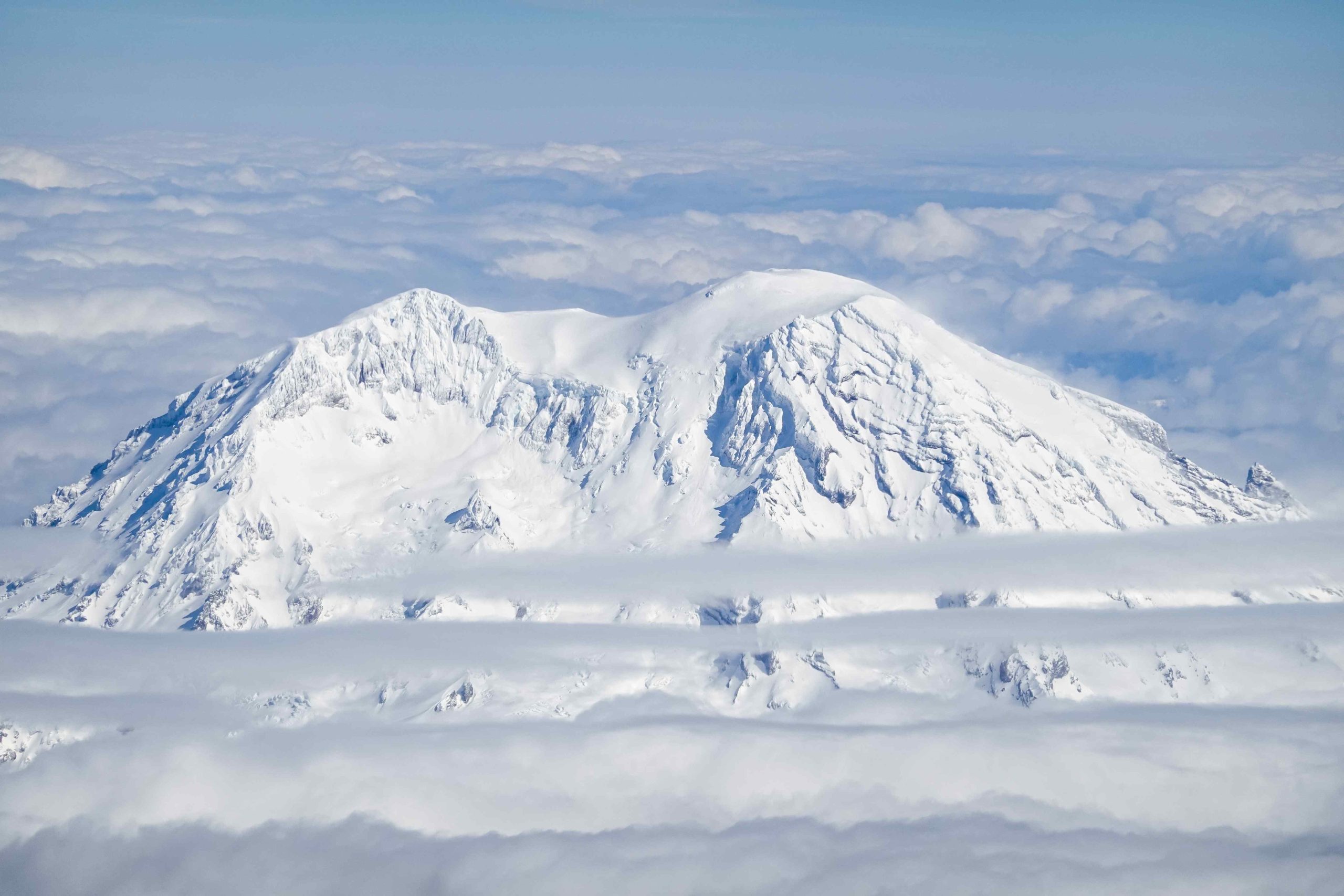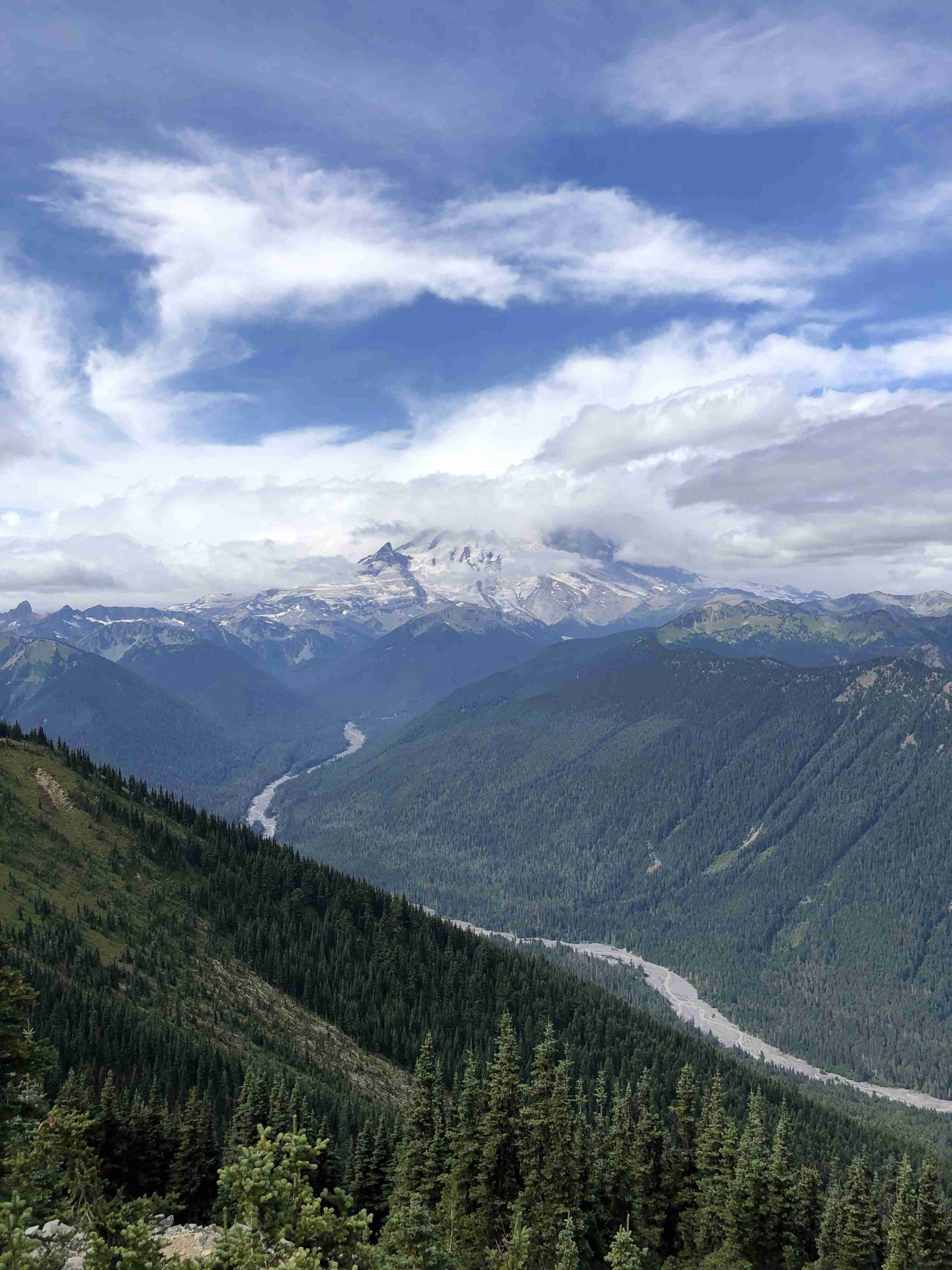The Mount Rainier Disappointment Cleaver route is the most popular path to summit Mount Rainier, offering a challenging yet accessible climb for experienced mountaineers. This route involves traversing glaciers, navigating crevasses, and ascending steep terrain. Climbers face an elevation gain of approximately 9,000 feet over 8-9 miles, with varying weather conditions and technical challenges. The Disappointment Cleaver route has an average summit success rate of 51%, attracting thousands of climbers annually.
What is the Disappointment Cleaver Route?

The Disappointment Cleaver route on Mount Rainier is a classic mountaineering journey that combines glacier travel, rock scrambling, and high-altitude climbing. It begins at Paradise (5,420 ft) and culminates at the summit (14,411 ft). The route is named after a prominent rocky ridge, the Disappointment Cleaver, which climbers must ascend on their way to the top.
Key features of the route include:
- Muir Snowfield
- Camp Muir (10,080 ft)
- Cowlitz Glacier
- Cathedral Gap
- Ingraham Glacier
- Disappointment Cleaver
- Emmons Glacier
- Summit crater
How Difficult is the Disappointment Cleaver Climb?

The Disappointment Cleaver route is considered strenuous and technically challenging. While it’s the most popular route on Mount Rainier, it’s not for novice climbers. Here’s a breakdown of the difficulty:
- Physical Demand: High – requires excellent cardiovascular fitness and endurance
- Technical Skills: Moderate – basic mountaineering skills are essential
- Elevation Gain: Approximately 9,000 feet
- Distance: 8-9 miles one-way
- Duration: Typically 2-3 days
Climbers must be proficient in:
- Glacier travel
- Crevasse rescue
- Use of ice axe and crampons
- Rope team techniques
What are the Specific Climbing Stages of the Disappointment Cleaver Route?
The Disappointment Cleaver route can be broken down into several distinct stages:
- Paradise to Camp Muir
- Distance: 4.5 miles
- Elevation Gain: 4,660 feet
-
Terrain: Maintained trail, then snow field
-
Camp Muir to Ingraham Flats
- Distance: 1.5 miles
- Elevation Gain: 1,000 feet
-
Terrain: Glaciated, some rocky sections
-
Disappointment Cleaver
- Distance: 0.5 miles
- Elevation Gain: 1,400 feet
-
Terrain: Steep rock and snow
-
Upper Glaciers to Summit
- Distance: 1.5 miles
- Elevation Gain: 1,900 feet
- Terrain: Heavily glaciated, crevassed areas
What Weather Conditions Can Climbers Expect on the Disappointment Cleaver?
Weather on Mount Rainier’s Disappointment Cleaver route can be unpredictable and extreme. Climbers should be prepared for a range of conditions:
| Condition | Typical Range | Notes |
|---|---|---|
| Temperature | 20°F to 50°F | Can drop below freezing at night |
| Wind Speed | 0 to 50+ mph | Higher winds above the cleaver |
| Precipitation | Variable | Snow possible year-round |
| Visibility | Clear to whiteout | Can change rapidly |
It’s crucial to check the latest weather forecasts before attempting the climb and be prepared to turn back if conditions deteriorate.
What Equipment is Necessary for the Disappointment Cleaver Route?
Proper equipment is essential for safety and success on the Disappointment Cleaver. Here’s a list of key items:
- Mountaineering boots
- Crampons
- Ice axe
- Climbing helmet
- Harness
- Ropes and carabiners
- Warm, layered clothing
- Waterproof/windproof outer layers
- Sleeping bag rated for low temperatures
- Four-season tent
- Stove and fuel
- High-energy food and water
- Headlamp with extra batteries
- Sunglasses and sunscreen
- First aid kit
- Navigation tools (map, compass, GPS)
What are the Common Challenges on the Disappointment Cleaver Route?
Climbers on the Disappointment Cleaver face several challenges:
- Altitude Sickness: The rapid elevation gain can cause acute mountain sickness (AMS).
- Crevasse Hazards: Large cracks in the glacier require careful navigation.
- Rockfall: Loose rocks on the cleaver can be dislodged by climbers or melt out.
- Weather Changes: Sudden storms or whiteouts can disorient climbers.
- Fatigue: The long ascent and thin air can lead to exhaustion.
- Technical Sections: Some parts require basic climbing skills, especially late in the season.
How Can Climbers Increase Their Chances of Summit Success?
To improve the likelihood of reaching the summit via the Disappointment Cleaver:
- Physical Preparation: Train extensively for months before the climb.
- Acclimatization: Spend a night at Camp Muir before summit day.
- Skills Practice: Gain experience with glacier travel and crevasse rescue.
- Weather Window: Choose a climb date with favorable weather forecasts.
- Guide Service: Consider hiring a professional guide for added safety and expertise.
- Mental Preparation: Be ready to turn back if conditions or health issues warrant it.
What is the Best Time to Climb the Disappointment Cleaver?
The prime climbing season for the Disappointment Cleaver route is from May to September. Here’s a monthly breakdown:
- May-June: Snow bridges over crevasses are more stable, but weather can be unpredictable.
- July-August: Best weather, but more crowded and crevasses are more exposed.
- September: Less crowded, but crevasses are fully open and early snow is possible.
Regardless of the month, it’s crucial to start the summit attempt early (usually between midnight and 2 AM) to minimize exposure to afternoon weather changes and softening snow.
By understanding the challenges, preparing adequately, and respecting the mountain, climbers can have a safe and rewarding experience on Mount Rainier’s Disappointment Cleaver route.
